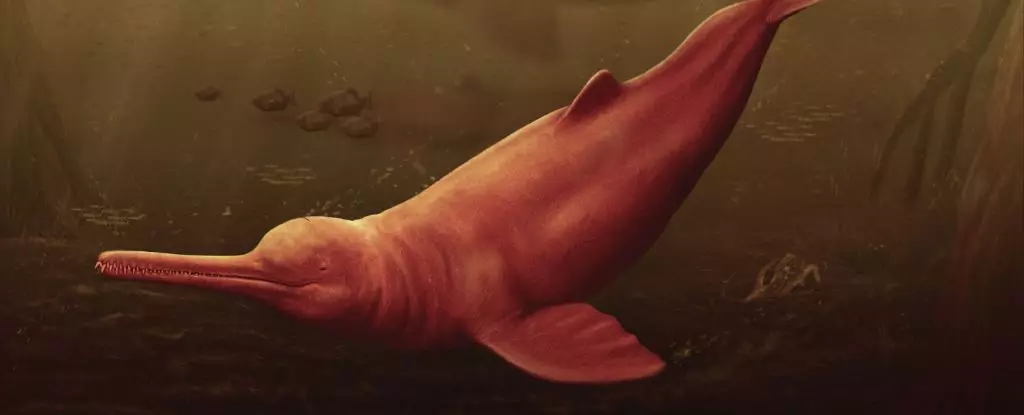An incredible discovery has shed light on the ancient biodiversity of the Amazon basin. A recently unearthed dolphin species, Pebanista yacuruna, dating back 16 million years, has stunned researchers with its enormous size. Measuring up to 3.5 meters (11.5 feet) in length, this giant toothed whale surpasses the size of today’s pink Amazon river dolphins by a significant margin. Despite being smaller than modern orcas, Pebanista highlights the diverse marine life that once thrived in the Amazonian waters.
What is particularly intriguing about this ancient dolphin is its closest relatives. Contrary to expectations, Pebanista is not closely related to the current Amazon River dolphins. Instead, its nearest cousins can be found in the Ganges and Indus rivers of South Asia. This surprising connection challenges previous assumptions about the evolutionary history of river dolphins and underscores the complex relationships among cetaceans across different regions.
The discovery of Pebanista was based on a single skull found in the Miocene fossil beds of the Pebas Formation. Despite the incomplete nature of the skull, researchers were able to glean valuable insights into the anatomy and behavior of this ancient dolphin. Like its modern counterparts, Pebanista possessed large crests on its forehead, indicating its ability to echolocate in the murky waters of the Amazon basin. This adaptation was crucial for navigating the muddy environment and hunting for fish, which formed a significant part of its diet.
Researchers believe that Pebanista likely originated from marine cetaceans that ventured into the Amazon basin through a network of rivers and lakes. As the landscape changed over millions of years, the dolphin thrived in the lush and abundant ecosystem of the Pebas region. However, with the transformation of the Pebas system into the modern-day Amazon basin, Pebanista’s habitat and food sources disappeared, leading to its eventual extinction. This evolutionary tale highlights the adaptability and vulnerability of species in a changing environment and offers valuable insights into the shifting ecosystems of prehistoric times.
While Pebanista may have vanished from the Amazon basin, its discovery provides valuable information about the interconnectedness of species and ecosystems. The changing dynamics of prehistoric landscapes and the extinction of key species like Pebanista have influenced the structure of modern Amazonian food webs. By studying the ancient past, researchers can gain a better understanding of the processes shaping current biodiversity and ecosystem resilience in the face of environmental change.
The ancient Amazonian dolphin Pebanista yacuruna offers a window into the rich history of marine life in the region and its intricate evolutionary relationships. By unraveling the secrets of this prehistoric creature, scientists can unravel the mysteries of the past and draw parallels to the present-day challenges of biodiversity conservation and ecosystem management in the Amazon basin.


Leave a Reply